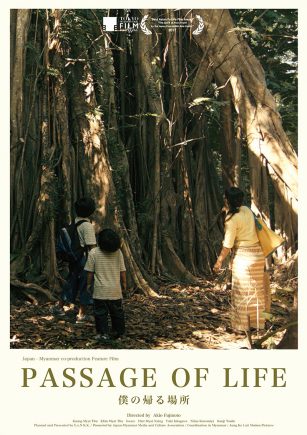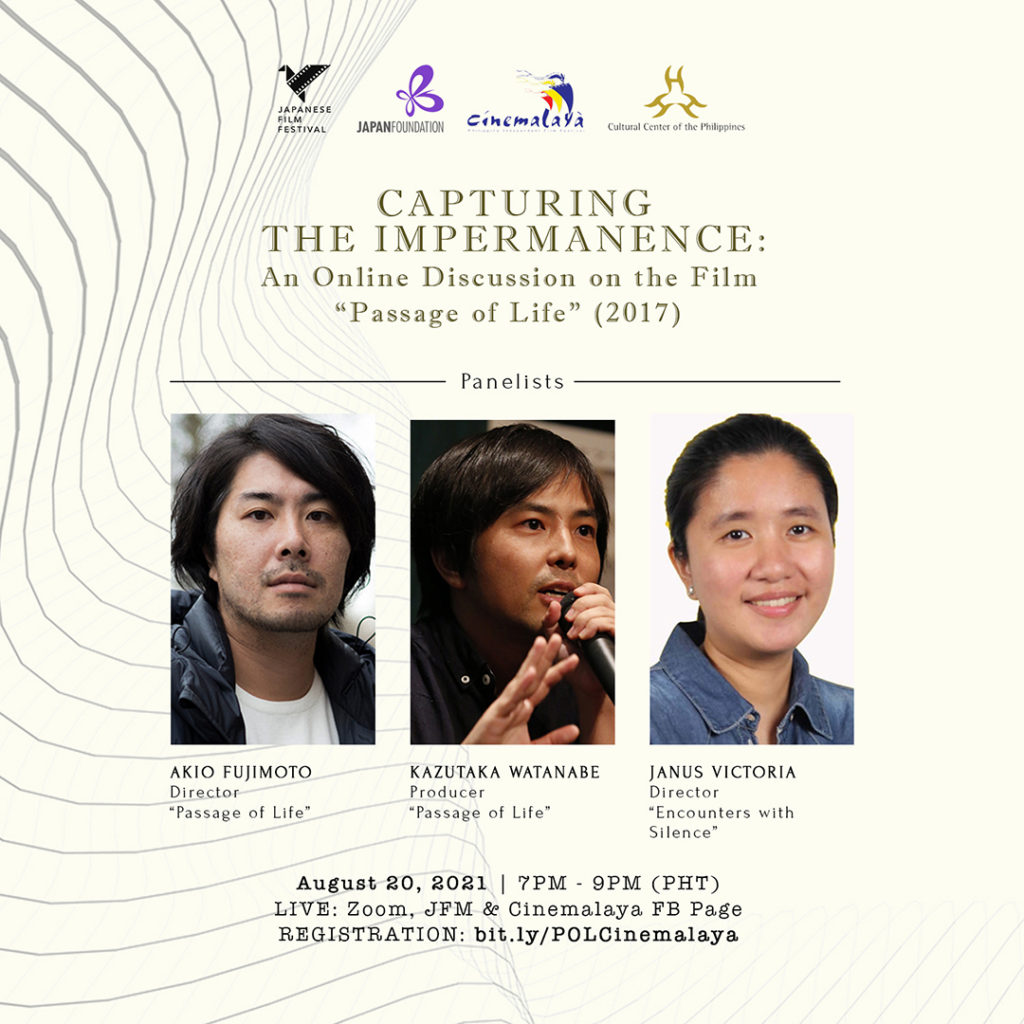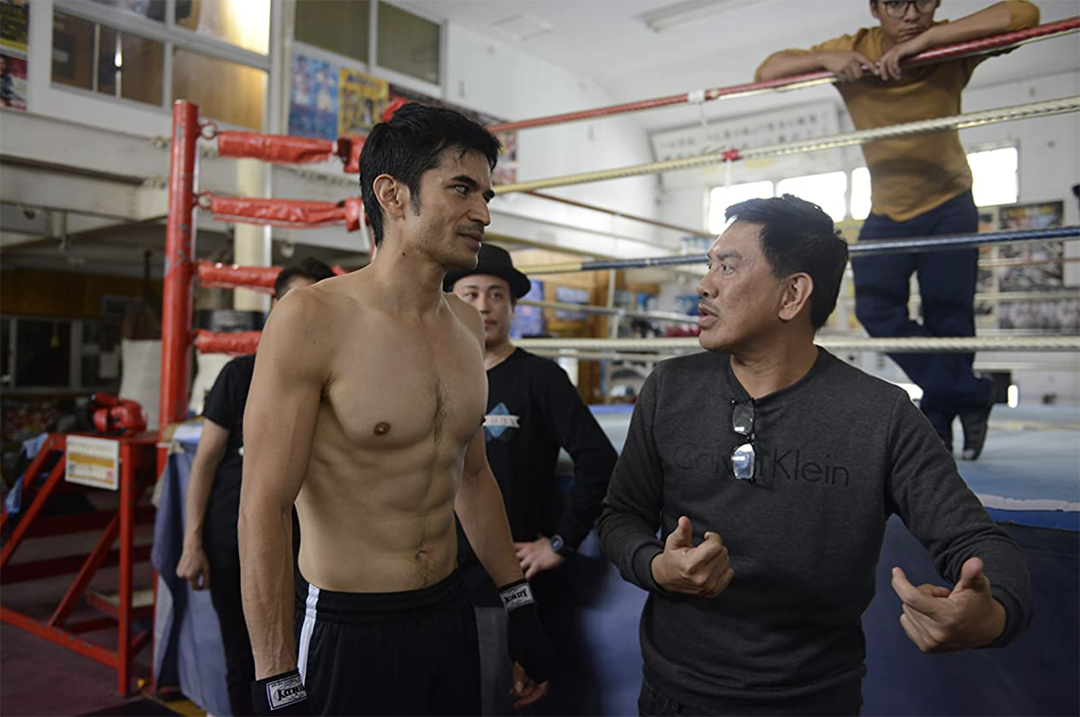Featured Image: Behind the scenes of Gensan Punch (2021). Japanese actor Shogen with Filipino director Brillante Mendoza.
Exchanging Japanese and Philippine Culture Through Cinema
Words by Mon Garilao
As the world continues to globalize, gradually removing barriers to people-to-people exchanges and trade of international goods and services, and as the digital revolution connects the whole world, the Philippine film industry saw itself growing alongside these rapid developments within its immediate environment.
We’ve seen the rise of international co-productions in the past two decades bringing the Philippines to the global arena of motion pictures. We saw the rise of Japan as a favorite film production partner and film destination for many local Filipino movies with the likes of “In the Name of Love” (2011), a film by Olivia M. Lamasan, and “Sid and Aya” (2018), directed by Irene Villamor, both mainstream films which featured Tokyo, Japan as their backdrop. Other Filipino films shot in Japan include “Between Maybes” (2019) by Jason Paul Laxamana; and “The Missing” (2020) by filmmaker Easy Ferrer with immense support from the Saga Film Commission.
The independent cinema sector also showcased its ingenuity by presenting various stories on Filipinos in Japan in the films like “Blue Bustamante” (2013) by Miko Livelo, “Imbisibol” (2015) and Kintsugi (2020) by Lawrence Fajardo, and “Kita Kita” (2017), a film shot in Sapporo and other locations in Japan by Filipino film director Sigrid Andrea P. Bernardo, which soared to become the highest-grossing independent Filipino film in 2017. Consequently, there are several Filipino films with Japanese elements screening at the 2021 Tokyo International Film Festival such as “Gensan Punch” (2021) by filmmaker Brillante Mendoza, and “Arisaka” (2021) by cult filmmaker Mikhail Red.
Other interesting variations where we could see Japan and the Philippines’ film relations include short films such as “Encounters with Silence” (2016) which was produced during director Janus Victoria’s fellowship at the Japan Foundation Asia Center; also “Kodokushi” which is Victoria’s current feature film in development; “Come on, Irene” (2018) a Japanese production directed by Keisuke Yoshida starring Filipina actress Nats Sitoy; and “Onoda: – 10,000 Nights in the Jungle” (2021), a French, German, Belgian, Italian, and Japanese co-production about the Japanese soldier Hiroo Onoda who stayed in the Philippines islands until 1974 to fight even after World War II ended. The film opened Cannes Film Festival’s Un Certain Regard section and stars Japanese actors, Yuya Endo and Kanji Tsuda, with a cameo of award-winning Filipina actress Angeli Bayani.
Japan and the Philippines’ diplomatic relationship is now 65 years strong. However, our actual encounters with one another stem years way back. This deep history and friendship fostered by the memories of war, mutual understanding, trust, and solidarity are well-represented in the various films produced in both countries. Landmark films in the 21st century from the bemedalled “Aishite Imasu 1941: Mahal Kita” (2004) directed by Joel Lamangan to “Tanabata’s Wife” (2018) by Lito Casaje, Charlson L. Ong, and Choy Pangilinan were all representations of the two countries’ strong connections rooted deep in their consciousness.
Cultural content in the form of mass media such as films are very effective in bridging cultures between and among nations. Films, when exported in particular, are quite easier to be understood than other forms of media as language barriers are solved through the availability of subtitles and closed captioning. As moving images bring viewers to various places and allow them to experience diverse emotions within the comfort of their homes — now thanks to streaming sites like Netflix and online film festivals such as the Japanese Film Festival Online (JFF), the global audiences are able to build an affinity and familiarity with the cultures that they are being presented with.
In 2016, Japanese director Makoto Shinkai’s animated film “Your Name” (2016) became a huge hit in the Philippines and around the world. The director is known for his intelligent use of real-life locations in Tokyo as inspirations for his animations. With his films rising into popularity, it then became a pilgrimage by Japanese film lovers around the world to visit the locations showcased in his animated films and take real-life interpretations of each iconic scene.
Data from Japan National Tourism Organization (JNTO) Manila office emphasized that there was a 7.1% increase in Filipino tourists to Japan in the first half of 2019, a year before the pandemic, compared to the same months in 2018. It could be assumed that a huge part of its increase is due to the fact that Japanese tourist spots and locations were given more exposure in Filipino blockbuster films.
As global tourism took a worldwide pause due to COVID-19, Film Tourism might be a potential force that could entice people-to-people exchange and revitalize travel in the future. We’ve seen Japanese cinema flourish in this aspect with films like “Spirited Away” (2001) boosting the tourism of Taiwan’s Jiufen Old Street where the film was supposedly inspired from. However, with director Hayao Miyazaki clarifying that the film was not inspired by just one place, it was revealed that the success of an earlier Taiwanese film “A City of Sadness” (1989) reinvigorated interest in this historic destination.
Other examples of successful film tourism include Sukibayashi Jiro in Roppongi, renowned as the first sushi restaurant spot owned by sushi master Jiro Ono which rose to fame internationally due to the documentary film “Jiro Dreams of Sushi” (2011), and Jinpukaku in Tottori a French Renaissance style residence which was featured in the blockbuster film “Rurouni Kenshin” (2012).
While there are several Filipino films about Japan that were shot in various Japanese locations, only a few Japanese film productions have utilized the Philippines as their cinematic mise-en-scène in the past two decades. To name some Japanese titles filmed in the Philippines: “Crossroads” (2015) by director Junichi Suzuki shot in Baguio with the Rice Terraces as backdrop; “Blanka” (2015), a film by Kohki Hasei which was part of the Biennale College of the Venice Film Festival; the blockbuster film “Lupin the 3rd” (2014) by Ryuhei Kitamura; “Tears of Malumpati” (2019) by director Keita Meguro; and “Abong: Small Home” (2003) by Koji Imaizumi starring National Artist for Cinema Kidlat Tahimik.
While Filipino film productions have actively engaged in shooting local films in Japan, more Japanese film productions have yet to experience and integrate the wonders of the Philippines in their moving images. There is a need to fortify film collaborations between both countries and at present, The Japan Foundation, Manila has been at the forefront of this endeavor. Through JFM’s grants, support programs, and several exciting projects, more Japanese filmmakers and film professionals are being invited to encounter and be introduced to Philippine cinema and culture.


Just recently, JFM hosted the film “Passage of Life” (2017) by award-winning filmmaker Akio Fujimoto at the Cinemalaya Independent Film Festival. This became an opportunity for the Filipino audiences and Director Fujimoto to get to know each other’s cinematic cultures. The pandemic might still hinder physical co-productions but through JFM’s initiatives, there is the confidence that we can expect more amazing collaborative Japan-Philippines films in the near future.
Watch and learn more about by Japanese films by visiting the official Japanese Film Festival 2022 website here.







